The second wave of Covid-19 outbreak has created a critical situation for us all. Thankfully, the open source community and several groups of enthusiastic techies have taken up the challenge and are offering some excellent solutions for combating the coronavirus. The open source community is also providing a low-cost design for polymerase chain reaction (PCR) testing. The entire device can be made for about 50 dollars (approx. 3,700 rupees) only.
EFY team has reviewed and shortlisted some of the open source products. Hope you will find the information useful in these difficult times.
Pocket PCR
As we know, the PCR test is one of the reliable solutions for covid detection. This Pocket PCR is an open source testing device that is small and affordable but powerful like a full-fledged thermocycler with large laboratory machine-like features. Even in this small size, the device features PID temperature control with great accuracy. It has 5×0.2ml PCR tubes while its overall size is 33mm×105mm×50mm and weighs just 50 grams. It can be powered with any 2A power adaptor or computer port. For details: click here or click here
For details: click here or click here
OpenPCR
OpenPCR is a small and affordable PCR machine that features an adjustable-height heated lid. This enables heating of the top of the tube up to 120 degrees Celsius, preventing any substantial condensation. It includes an intelligent GUI based control system that helps the device to run using any C (connected via USB). The GUI helps to program the PCR protocol. OpenPCR allows flexibility of disconnecting after being programmed. The machine will, however, continue to carry out the reaction while an LCD shows its live status with estimated remaining time.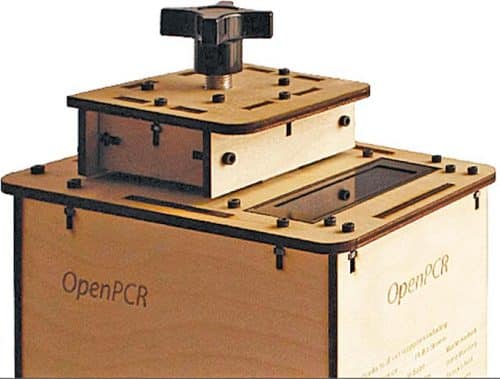 For Arduino code and details: click here or click here
For Arduino code and details: click here or click here
UV Robot
This UV robot sanitises large areas such as hospitals, offices, halls, and hotel rooms without creating any risk of exposure to dangerous UVC light. Unlike other UVC robots, this device gives wireless access to its GUI with a real-time video feed (for controlling the UV robot). For details: click here
For details: click here
uECG
This device helps track the health and heart data of a person. Unlike other ECG devices, this open source device is very small, weighs just nine grams, and is quite affordable. It gives a backup of up to nine hours and you can obtain the recorded data on both phone and PC.
For details: click here or click here
Thermal screening camera with recognition
While other contactless temperature sensors and thermometers need a person to check the results one by one, which can be tiring, this device combines facial recognition features and an automatic contactless thermal screening system. It can be deployed at entrance to places like offices, malls, or airports. It includes a robust database that stores images of regular visitors’ faces along with their names and temperature at the time of entrance for future tracking.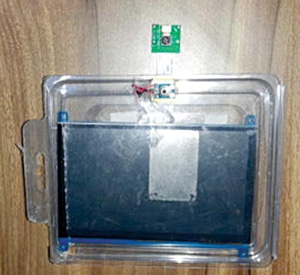 For details: click here
For details: click here
Smart Watchz
This Smart Watchz uses a sensor for capturing a person’s temperature, hand movements for sneeze and cough detection, and pulse and SpO2 meters for health data. Using the collected data, the system tries to detect the Covid-19 symptoms. It also supports data logging.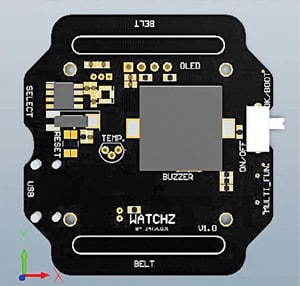 For details: click here
For details: click here
Ninja Lamp PCR
Besides being cost-effective and affordable, the Loop-Mediated-Isothermal-Amplification (Lamp) PCR is easy to make. You just need a few resistors, MOSFETs, heater for tube holder, and connect them to an Arduino. The device gets ready in no time at a cost of about 300 dollars.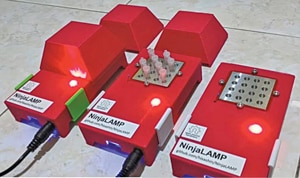 For Arduino code and details: click here or click here
For Arduino code and details: click here or click here
Skin temperature scanner
While thermal screening cameras are quite costly, this open source temperature scanning device enables you to make a thermal camera at an exceptionally low cost. The whole device is also small and portable; it can be carried and mounted anywhere.
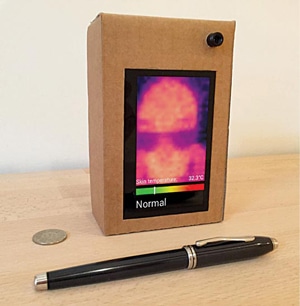
For details: click here
Pulmonary ventilator
This ventilator helps a person facing difficulty in breathing. It has a face mask that pushes the pressurised air through a patient’s nose or mouth for breathing. It is an open source non-invasive ventilator that can be tried in an emergency, as long as the patient is not sedated or intubated.
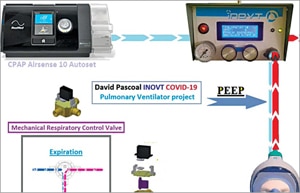
For details: click here






